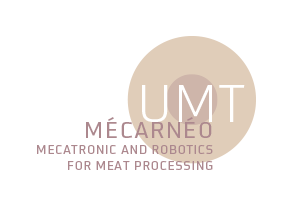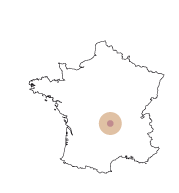
Coordination
Partners
Objectives
Meat industries are being faced with a certain number of challenges with respect to society’s ever-increasing expectations regarding animal rights or the nutritional and health qualities of products. These challenges include
- readjusting production capacity;
- improving productivity and manufacturing efficiency;
- improving working conditions by lessening the difficulty involved in carrying out certain tasks;
- adapting to markets by including quality control in its various forms (health, nutritional, sensory, environmental).
The mechanisation-robotisation-automation of tasks contributes significantly to these competitiveness issues.
The creation of the ACTIA MÉCARNÉO (Mecatronics and robotics for meat processing) UMT is consistent with the challenges identified by public authorities and the various steps taken to support them in order to improve the sector’s competitiveness.
Technology developed within the scope of this UMT can be easily transferred to the aquatic sector, for which a number of projects have already been identified due the similarity of the socio-economic issues (frequency of repetitive strain injury (RSI), etc.) and the technological issues (manipulation of soft and deformable objects, etc.).
This UMT, located in Clermont-Ferrand, started in January 2014.
It follows on from the ACTIA Mechanisation-automation in meat supply chains UMT.
Actions
This UMT is being structured towards complementary research and development themes (Area 1, Area 2, and Area 3) in terms of computerised, mechanical, robotic or even automated solutions, and focused on different and complementary scientific disciplines and obstacles:
Area 1: Mechanical and robotic solutions with a view to a full automation of unit operations or production lines.
Area 2: Development of cobots and mechanical aids to reduce the difficulty of certain tasks and RSIs.
Area 3: Virtual and augmented reality (real-time 3D) in support of vocational training and workplace ergonomics.
Area 4: Organisation and industrial performances, systems management.





